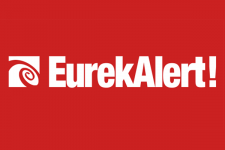“Patchwork Metal-Organic Frameworks by Radical-Mediated Heterografting of Star Polymers for Surface Modification” by Namyoung Ahn, Jooyeon Lee, Wonjune Yeo, Hyojin Park, Jiyub Nam, Min Kim, and Myungeun Seo was published in Inorganic Chemistry. This publication is a result of continuous collaborative efforts with the Min Kim group at Chungbuk National University, specializing in the metal-organic framework (MOF) chemistry.
MOFs are intriguing microporous materials consisting of metal atoms/clusters connected by organic linkers via coordination bonding. As the pore structure is well-defined and tailorable by the rational design of the organic linker, they have huge potential for applications such as catalysis, separation, and molecular storage. However, it is difficult to process MOF because they are inherently obtained as crystalline and brittle solids. Grafting polymer chains on the MOF surface can make MOF particles processable and dispersible in the target matrix/solvent. “Grafting-from” polymerization has been typically used to grow polymers from the MOF surface. However, several challenges, such as polymer characterization and pore inclusion, remain. Notably, this route cannot achieve simultaneous grafting of different polymer chains (“heterografting”).
Here we developed the “grafting-onto” route using vinyl polymers synthesized by controlled radical polymerization (RAFT polymerization in this case) with vinyl-functionalized MOF. The chemistry is identical to chain extension for the block copolymer synthesis – except that the second monomer is MOF. We used core cross-linked star polymers containing multiple chain ends in the core to facilitate the addition reaction of the numerous radical species to the vinyl groups exposed on the MOF surface. The star architecture with the large hydrodynamic size seems to also prevent the polymer chains from sneaking into the MOF pores. We show two different polymer chains can be simultaneously grafted to produce “patchwork” surface, which exhibits interesting properties such as interfacial jamming and programmed surface exposure by selective etching.
Check out the publication at the following link: https://pubs.acs.org/doi/10.1021/acs.inorgchem.2c00906


